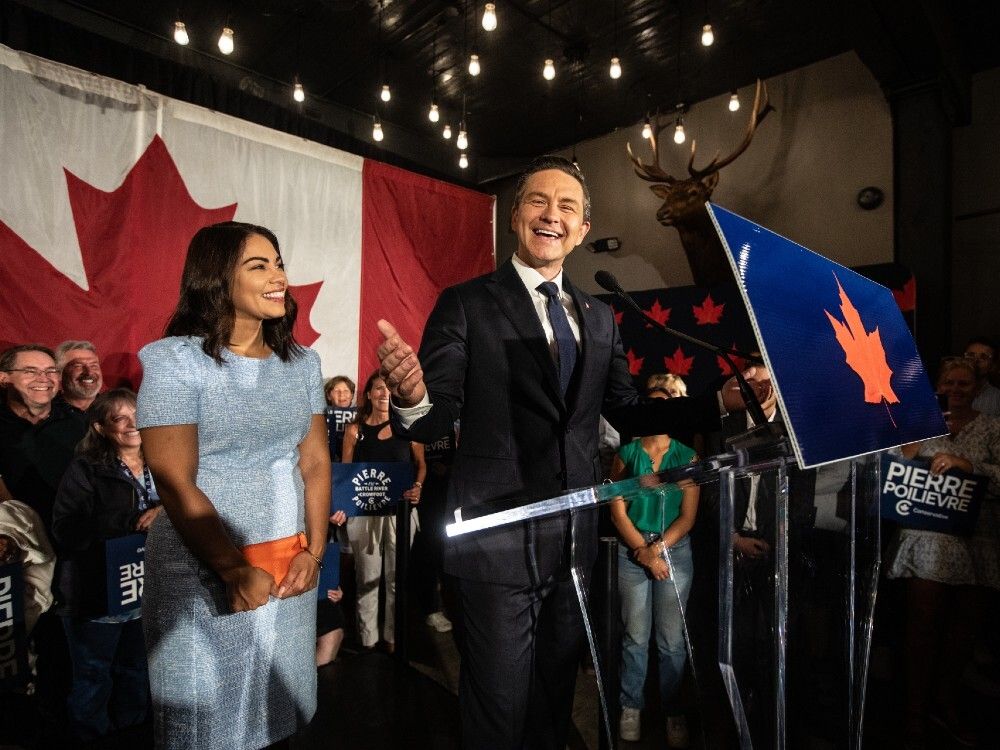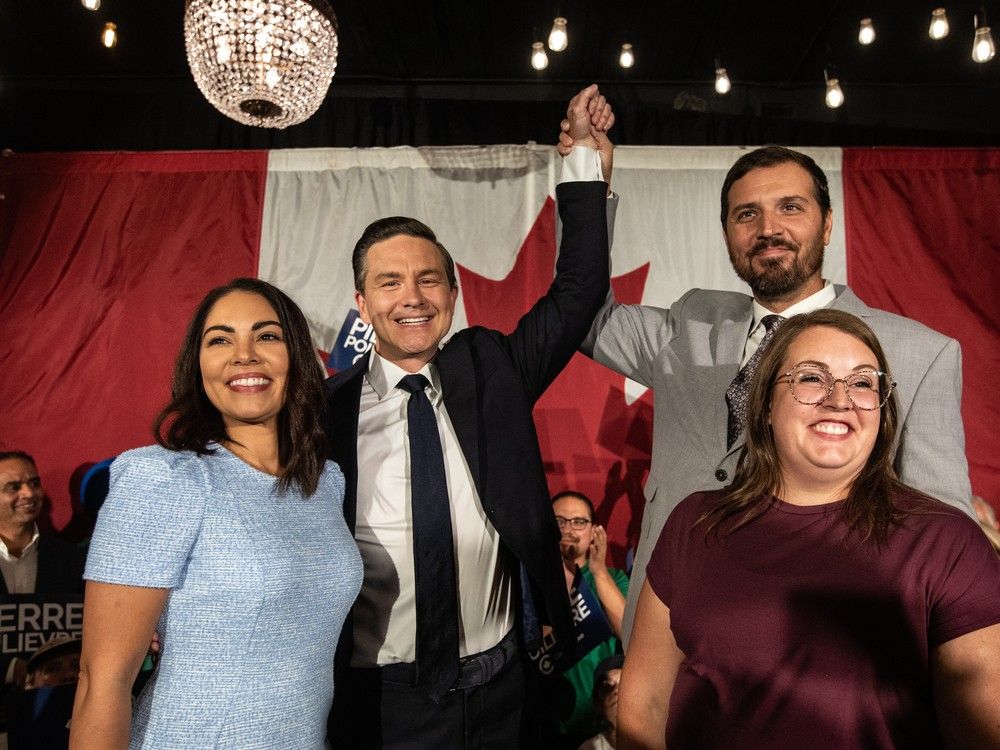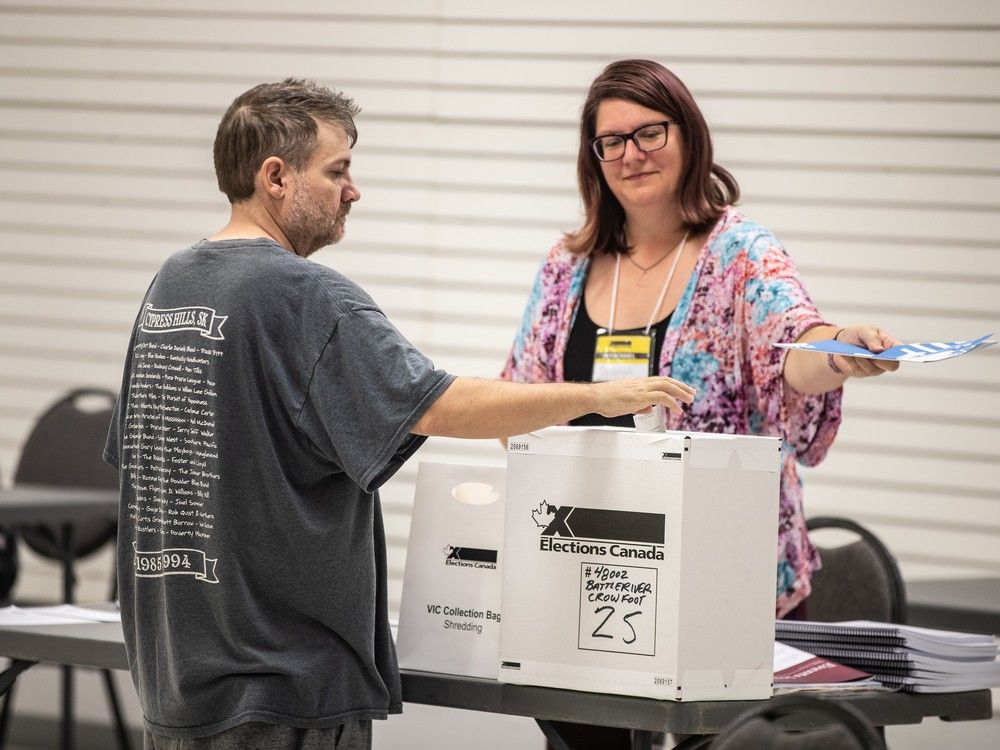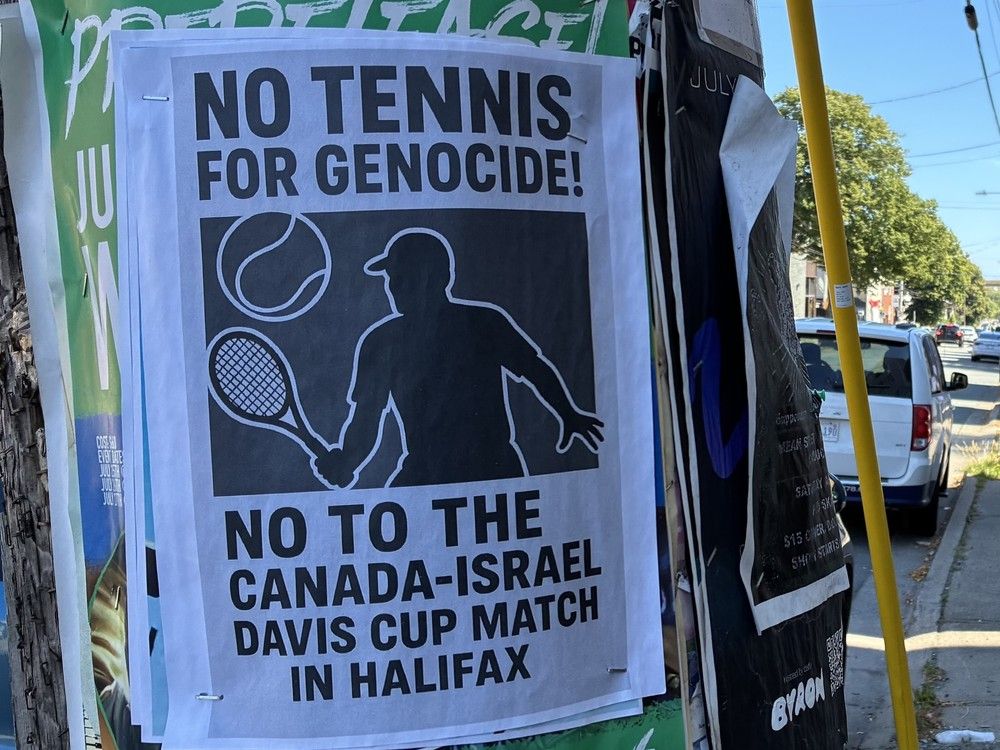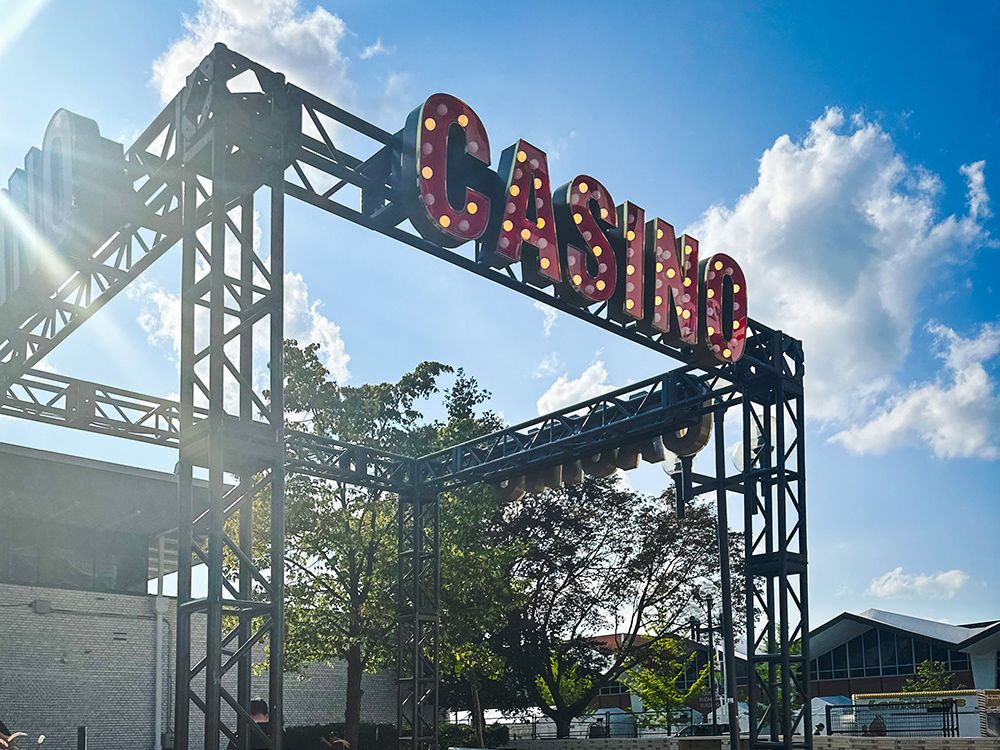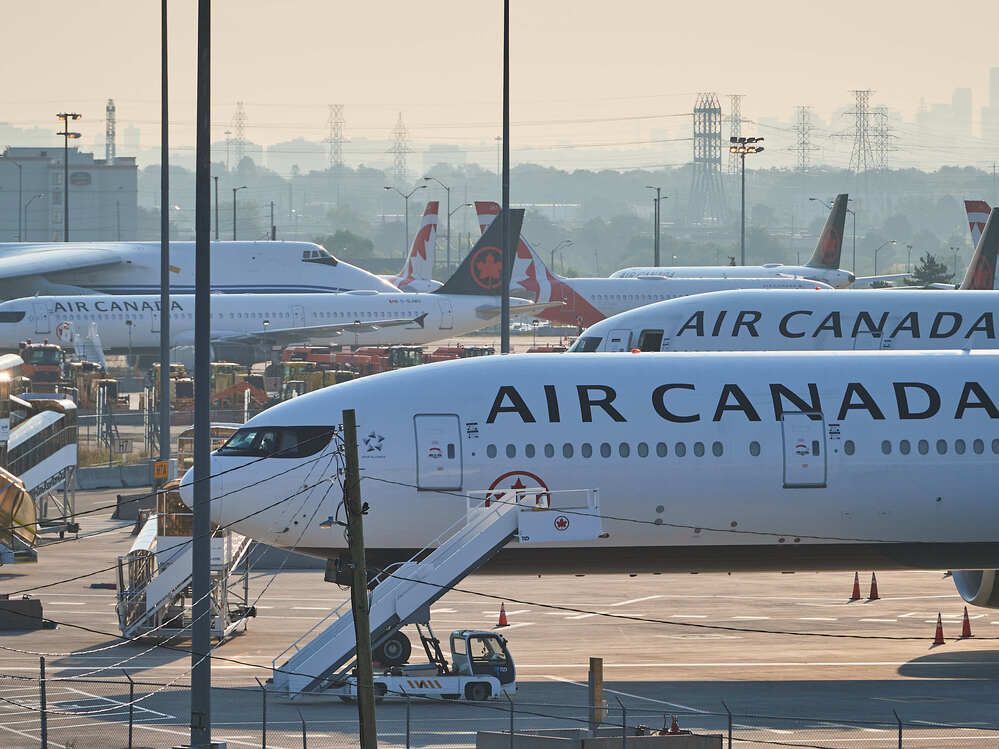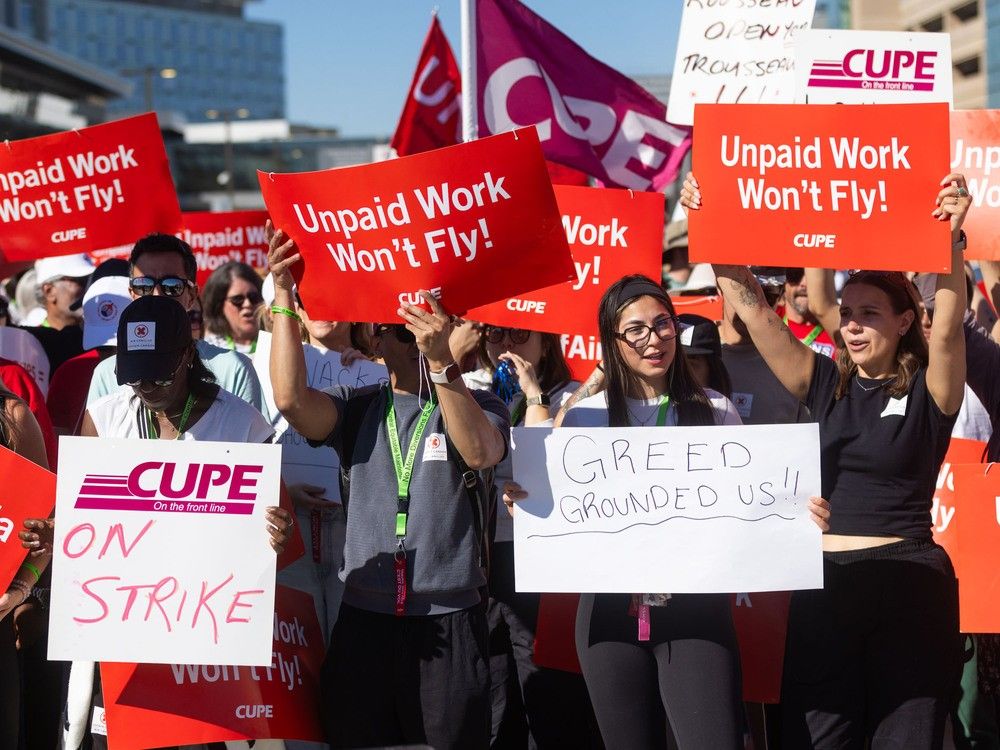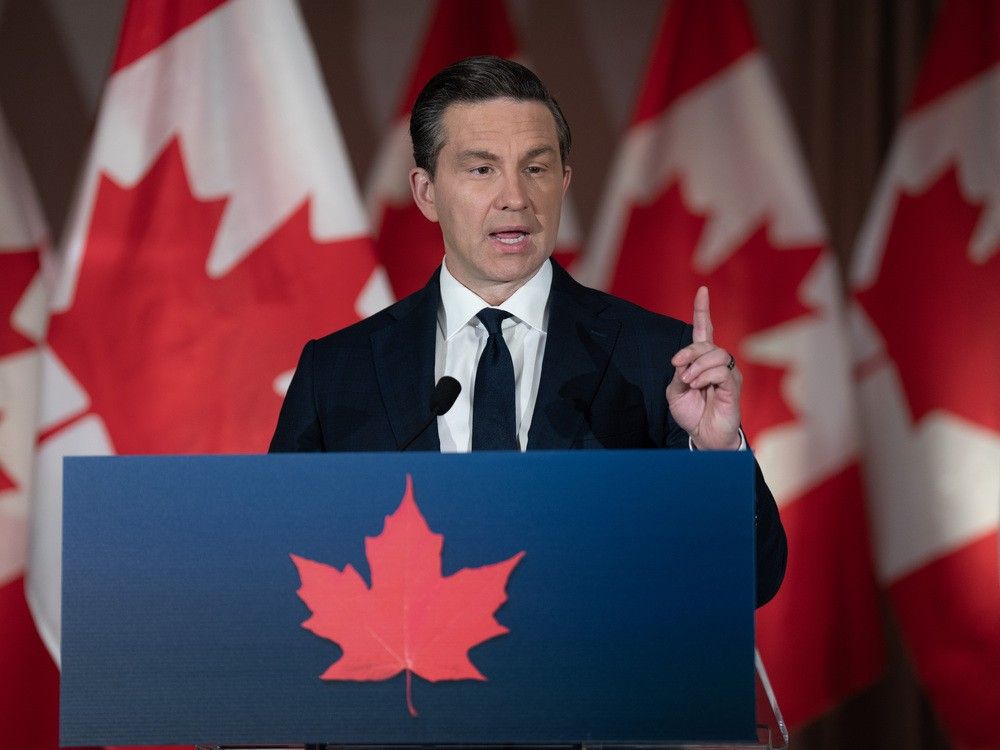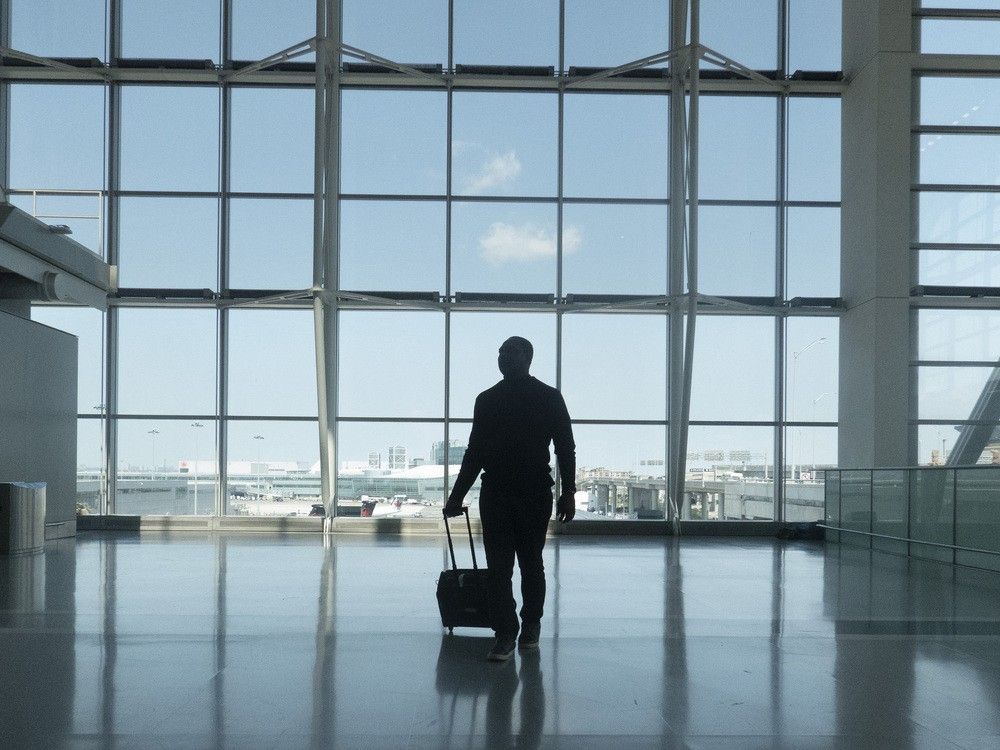
OTTAWA — Conservative Leader Pierre Poilievre is one of 214 candidates — and not even the only Pierre on the ballot — fighting a byelection that was never part of his plan.
Monday’s vote in Alberta’s Battle River—Crowfoot riding,
despite the lengthy roster of candidates
, should be an easy win for Poilievre. But spending his summer campaigning in rural Alberta was a high price to pay to look Prime Minister Mark Carney in the eye during question period when the House of Commons reconvenes in September.
Eight months ago, polls suggested the Conservatives were a slam dunk to form government. Instead, Poilievre lost his own seat in the Ottawa-area riding of Carleton and his Conservatives suffered a crushing defeat to Carney’s Liberals. Now, Poilievre faces a daunting, multi-year journey to get a second shot at the country’s top political post.
Despite his year from hell, Conservative party insiders — both Poilievre’s friends and foes alike — say the path to victory may have its share of hurdles but that it’s far from impossible.
Anthony Koch, the managing principal at AK Strategies and former spokesman for Poilievre, said the party needs to recognize that change is necessary and carefully focus on “winning” issues.
“We have to move on from the last election,” he said.
The leadership review awaits
First, Poilievre will need to convince his fellow Tories that he deserves a second shot and that he’s their best bet to win the next general election.
After Monday’s byelection, Poilievre will turn his attention to the Conservatives’ leadership review, part of a national policy convention in Calgary at the end of January. A secret ballot vote on a party’s leader following a fourth consecutive general election loss would often be contentious. Party leaders often don’t get second shots.
But most party sources do not anticipate that Poilievre will have a problem hanging on to his leadership for two main reasons: he’s still popular in most party circles and there’s no active challenger waiting in the wings. Not only is nobody else actively organizing for a run at the Tory leadership to this point, but few party faithful even have confidence in identifying who the serious contenders might be.
“There’s no clear competitors,” said one Conservative source in Ottawa who is plugged into party circles across the country.
But that doesn’t mean that Poilievre is universally popular within his party, some emphasizing that it’s not healthy if the leadership review is treated as an afterthought. The party was ahead by as much as 24 percentage points a few months before the April election, they point out, when the incumbent government was tired and facing a struggling economy. It was a winnable election, they say, which means a healthy debate about party leadership is needed.
Some believe Poilievre was a big part of the problem.
But unless a formidable challenger steps forward, the main drama during the leadership review will likely surround the level of Poilievre’s support and whether that number surpasses the various arbitrary thresholds that are presented. Some pundits say anything under 65 or 70 per cent would raise questions, but few doubt that Poilievre will remain as leader.
If he does, next will come the third and most difficult electoral hurdle: the next federal election.
Can Poilievre win over Canadians?
While Conservatives may be willing to let Poilievre get his ducks lined up for another run at 24 Sussex Dr., it’s unclear if the majority of Canadians share that view.
A number of things will likely need to happen for Poilievre and the Conservatives to break the Liberals’ streak of four consecutive wins. To begin with the most obvious, the incumbent Carney government must not have shown too much success in dealing with key issues, such as big projects, housing, and perhaps most of all, the economy and the Trump tariffs that threaten it.
The Conservatives may also need a comeback of sorts from the New Democratic Party, or perhaps another party left of the Liberals. Without somebody shaving off significant chunks of votes from Carney’s progressive flank, the numbers are tough for the Tories.
And finally, Poilievre and his team will need to deftly navigate the second and trickier track of his journey: working out which tactics, allies and personal characteristics need to be altered, scrapped or added.
That path forward, which is well under way, will be difficult to craft and even more difficult to execute.
The first question for Poilievre — not a no-brainer for many who know Poilievre — is whether he is willing to change. Or even if he should try to.
While the Tory leader is far from beloved by a fair number of Conservatives he’s worked with over the years, most agree that a good chunk of his appeal within the party base has been his consistency and authenticity as an unapologetic and unrelenting conservative. There’s little doubt that his beliefs on free markets, small government and almost anything that can be deemed a form of freedom are sincere.
When asked last month by National Post during a press conference whether he planned to do anything differently after the election loss, Poilievre didn’t point to any specifics, saying that the party’s mission remains the same: to offer Canadians “a government in waiting” and the opportunity to work hard and reap the benefits with a good life and safe communities.
“Every election comes with lessons,” he told reporters in Ottawa.
Poilievre also acknowledged that the electoral landscape may have changed beyond this past election and that the Conservatives need to expand their support and pull in a bigger vote share to form government.
“Forty-one per cent might not be enough in the future,” he said.
Party sources say that Poilievre has been active in calling party loyalists and others to gather views on the usual campaign post-mortem questions: what went right and wrong and what needs to change.
Rick Perkins, a former Nova Scotia MP and a Poilievre supporter, said the summer away from Parliament has been a blessing for the party’s leader because it’s allowed him to reflect, think about the issues, and re-connect with the grassroots. Perkins said that Poilievre is well aware that change will be part of the recipe to broaden the party’s support.
The new Pierre
In his public appearances since the April election, there have also been subtle signs of a more conciliatory approach.
A month ago, for example, Poilievre was interviewed on the CBC Radio program The House, where he seemed to be trying to appear less combative and more statesmanlike.
The fact that he agreed to a CBC interview of any kind was a change in direction after months when he and other Conservative MPs avoided the public broadcaster. When speaking about Carney’s inability to get any concessions for Canada in trade talks with the United States, Poilievre offered:
“I don’t blame him entirely for that. Obviously, he’s dealing with some unfair treatment by the Americans.”
That interview and what may be a less combative approach during other post-election appearances may be signs that Poilievre realizes that he has no choice but to broaden his support to win. And that means being more conciliatory, bringing more people to his side.
“I think that he sees that he was missing opportunities,” said one Conservative source.
But many Tories also acknowledge that self-reflection and self-doubt are neither Poilievre’s inclination, nor his strength.
One Conservative who says he knows Poilievre well says there’s a limit to how much the party leader will be willing to change about himself. “I don’t know if he can.”
That source also said that Poilievre needs to have the humility to accept that he lost and that there were reasons for that, beyond the Trump tariffs and Justin Trudeau’s resignation.
Ginny Roth, Poilievre’s director of communications during his leadership campaign in 2022, said a lot of people overthink the question of what to change about the Tory leader’s personality. Many of the same traits that some people want Poilievre to soften, she said, are the ones that allowed him to generate a massive YouTube following and convince many people to vote for the first time.
“I think you have to let Poilievre be Poilievre and let the chips fall where they may,” Roth said during an interview, “because the things that people may perceive as his weaknesses, the flip side of that are his greatest strengths.”
The debate about Poilievre’s electoral ceiling remains, particularly about the roots of his halcyon days of less than a year ago when he was riding high in the polls:
Was such a large swath of the country really behind the Tory leader, or was his sizeable lead more a function of the public’s desire to get rid of Trudeau?
Many Conservatives point to the party’s increased vote total to say they lost only because Trump handed Carney his ideal ballot-box question. The counter argument is that both major parties — not just the Tories — significantly increased their vote totals during the election because the tariff threat focused voters on choosing which of the two major parties and leaders was best able to deal with the threats from the south.
Like most political leaders, some say that Poilievre is simply not the right person to be leader because too many Canadians don’t like him and won’t vote for him.
One Conservative organizer said Poilievre is simply too arrogant to change or accept that he was only leading in the polls last year because the public wanted Trudeau out, not him in.
One experienced Conservative campaign figure, not a Poilievre supporter, said there is no path to victory with Poilievre at the helm. “We are just gearing up to lose another election,” he said. “People aren’t clamouring for change right now because they have it in Mark Carney.”
Carney’s advantage
Most Conservatives admit that Carney presents a whole new challenge for the party. Not only is he enjoying a luxurious public opinion honeymoon, voters also rate him highly on issues that historically favour the Tories, such as managing the economy.
“Conservatives can’t win without winning on the economy and pocket-book issues,” said Dan Robertson, a former chief strategist for the Conservative party and the co-founder of ORB Advocacy, in an email.
“In the penultimate week of the campaign, a 2,800 sample poll by Focal Data (a U.K. research firm) showed that the Liberals led the Conservatives on three of the four most salient issues. More worryingly, it also revealed that the Conservatives failed to win convincingly on the economy, the price of housing and affordability in general.”
Robertson said the Conservatives need to fight back on those issues, but also try to raise the salience of other issues, like crime and immigration.
In a recent Abacus Data poll designed to measure the traits that Canadians want in a leader, Carney “significantly outperforms” Poilievre on nearly every score. The gap, the poll from late July found, was particularly striking among “accessible voters” who say they’re open to voting for either party.
The poll, based on surveys of 1,915 Canadian adults between July 10-15, found that Canadians see Carney as a calming force compared to Poilievre’s combative public image. Sixty-nine per cent of respondents said Carney is “calm and steady during uncertain times,” compared to 50 per cent for Poilievre, and 66 per cent said Carney ”avoids unnecessary conflict and doesn’t pick fights for the sake of it,” compared to 44 per cent for Poilievre.
David Coletto, chief executive of Abacus, concluded from his poll that Carney is more than just liked at this time by Canadians. “He’s seen as competent, principled, and measured, qualities that resonate strongly with the electorate right now.”
For Poilievre, Coletto wrote, the picture is more complicated. Respondents gave him strong results on a number of questions, including a majority of Canadians (55 per cent) saying that the Tory leader “understands ordinary Canadians.”
The problem from the Conservatives’ perspective — at least for now, months or years before the next election — is that Carney outscores Poilievre in nearly every way among the broad electorate.
“While his supporters see him in highly positive terms, and his ratings are strong within the Conservative voter universe, his alignment with broader public expectations is weaker,” Coletto wrote. “Canadians are not vague or passive about what they want in a leader. They want someone who puts the country first, understands their challenges, and brings a clear, steady hand. Right now, Mark Carney is meeting those expectations better than Pierre Poilievre, not just with his own base, but with the people in the middle who will decide future elections.
Poilievre faces other challenges too.
There’s a fine line between making changes so that you’re the best possible candidate, but also not appearing to be so fungible that you’re not authentic. And the advice coming to Poilievre is as contradictory as it is strident.
One Conservative source said Poilievre needs to stop being the “know-it-all nerd” because “there’s no charm in it.” Another Conservative source said Poilievre needs to go back to embracing his “inner nerd” so that he comes across as more himself.
The team remains the same
Another area of possible change is in the team around him.
After the election loss, it was assumed by many pundits and party faithful that dumping campaign manager, long-time ally and former girlfriend Jenni Byrne was a no-brainer.
Byrne, like Poilievre, is seen as a sharp, seasoned political organizer but one who can alienate other Conservatives by being unnecessarily confrontational and insisting on an approach that sometimes comes across as “my way or the highway.”
Public fights with Conservative premiers Doug Ford of Ontario and Tim Houston of Nova Scotia, which many believe were largely triggered by Byrne’s aggressive approach, were widely seen as own goals that were costly and avoidable. The two premiers, or at least those in their orbits, weren’t the only Conservatives to endure Byrne’s wrath over the years — and not want to come back for more.
Byrne said earlier this month that she would not be the Conservatives’ campaign manager for the next federal election, although she didn’t rule out another role. One Conservative source said most other key members of Poilievre’s circle, however, have remained.
For Poilievre, a passionate policy wonk since his teen years, adjusting his platform in any significant way to make it more digestible or centrist might be for him the most contentious consideration. It may be a non-starter.
For much of the post-election months, the party’s strategy seems to have been conduct the post-mortem, keep the loyalists engaged, focus on the byelection and keep your head down until Carney’s political honeymoon inevitably takes a step or two back.
But Carney hasn’t made it easy on the Tories. The new prime minister has moved his party swiftly to the centre-right on many issues: reducing personal income taxes, cancelling the consumer portion of the carbon tax and the digital services tax, reversing Trudeau’s planned increase on capital gains tax, plans to reduce the size of the bureaucracy, investments in defence, support for pipelines and other infrastructure projects. That has left Poilievre and the Tories with less room to operate and mine for support.
During one summer event, the contrast in styles between the popular prime minister and the embattled opposition leader couldn’t have been much starker.
As he shook hands, posed for photos and joked with Alberta Premier Danielle Smith about his hapless attempts to flip pancakes, Carney gave every indication that he was enjoying the Calgary Stampede, despite talk that these types of back-patting, hand-shaking events are far from his idea of a good time.
According to a pool report, Poilievre, meanwhile, stayed in his car, apparently waiting for the United Brotherhood of Carpenters event to end. Or at least for the prime minister to leave.
With a twisty, long journey in front of his desired path to Sussex Drive, Poilievre will need to show that same patience if he’s to replace Carney any time soon on the much larger stage.
National Post
Our website is the place for the latest breaking news, exclusive scoops, longreads and provocative commentary. Please bookmark nationalpost.com and sign up for our daily newsletter, Posted, here.
